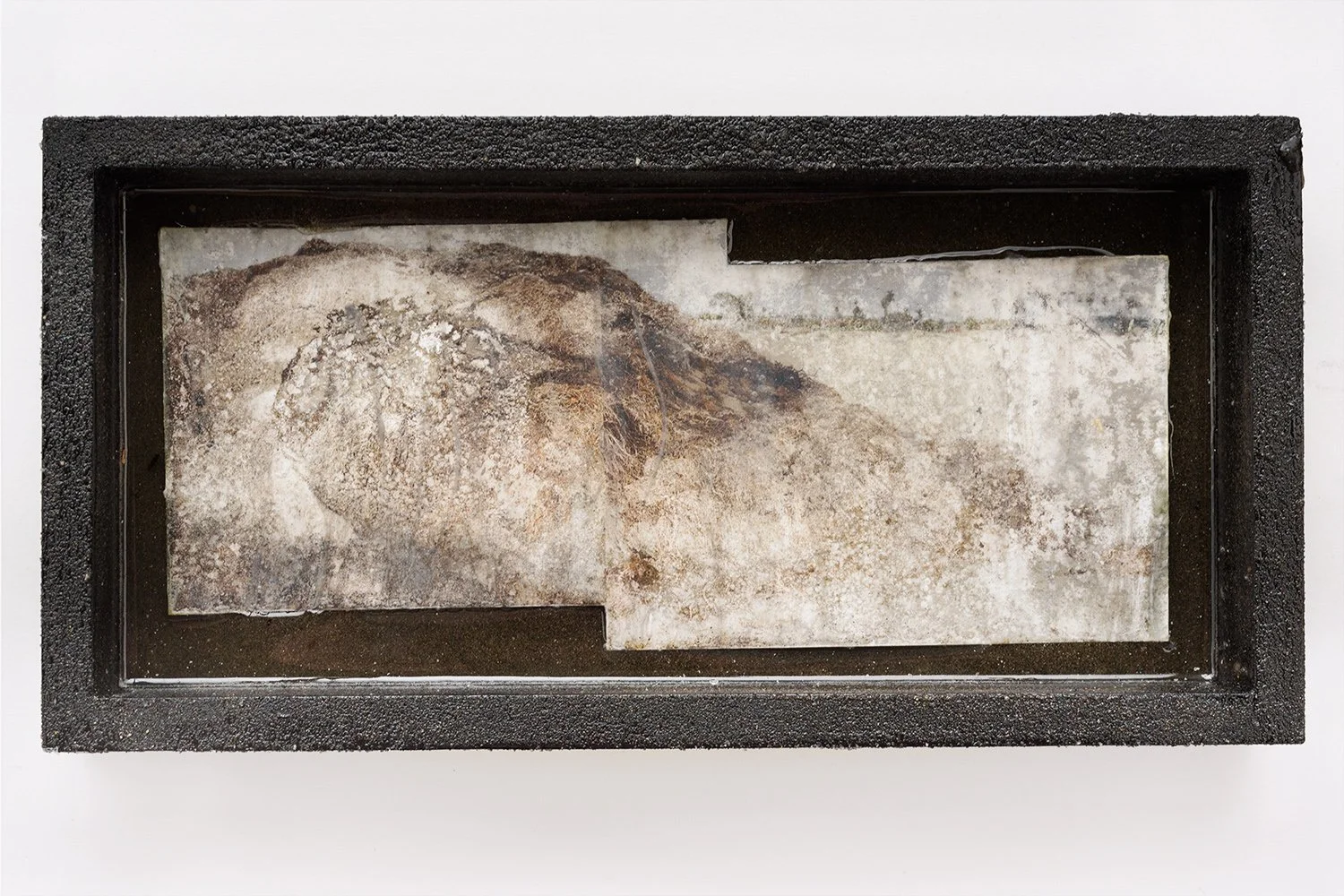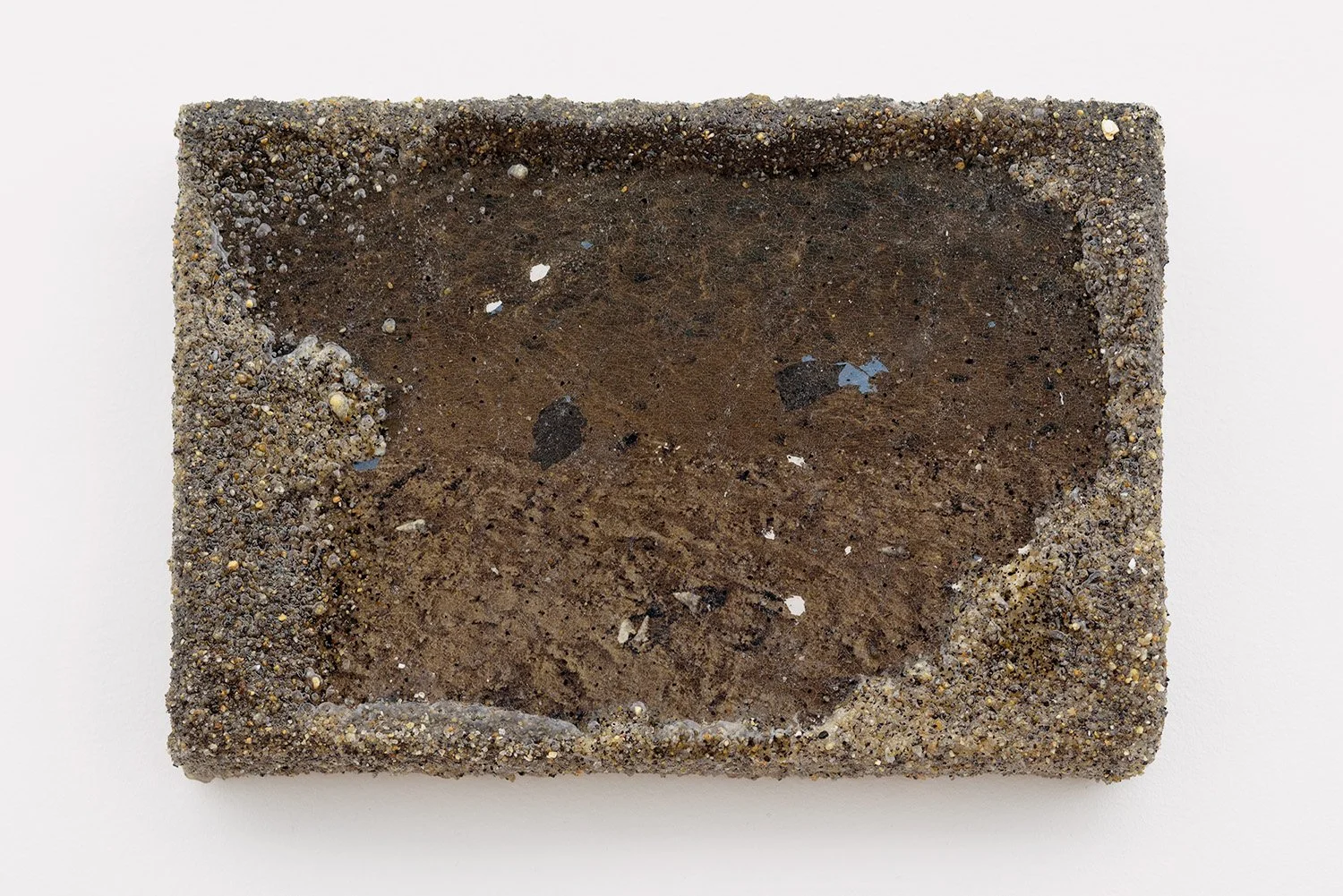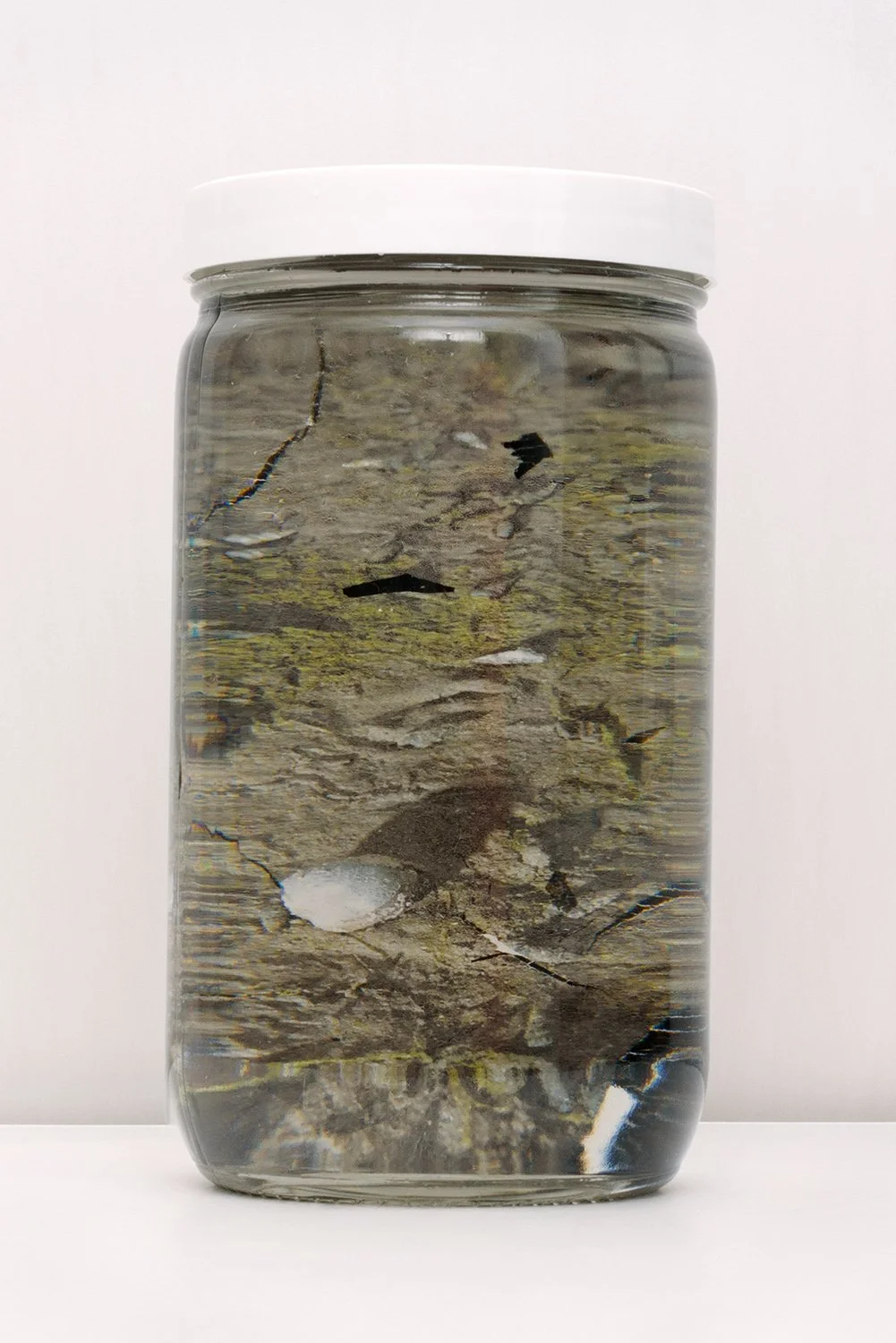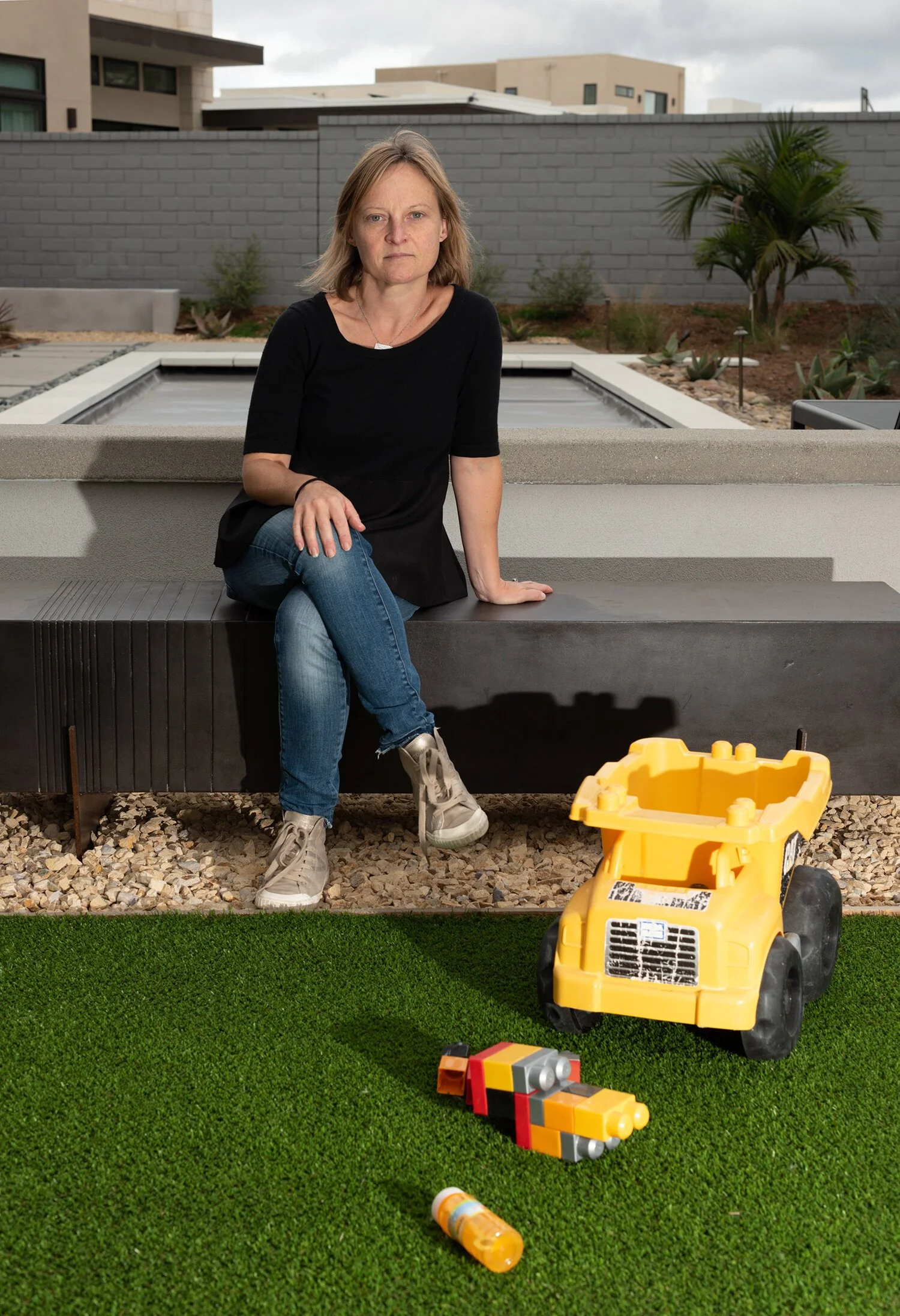Interview: Annie Claflin - Undertow
Annie Claflin is a multidisciplinary artist based in San Diego, California, whose work centers on the photographic medium. Her art focuses on themes of family, home, and identity, often intertwining these personal narratives with explorations of mental health. Through a blend of straight photography, digital collage, and intentional camera movement, Claflin crafts imagery that invites viewers into her inner monologue, offering a profound glimpse into her relentless search for sanctuary amidst psychological unrest.
Born in 1978 in Boston, Massachusetts, into a family of amateur photographers, Claflin's fascination with photography was kindled at an early age. By the age of 18, she was fully committed to the profession, immersing herself in the art form that would become her life's work. She honed her craft academically, earning a Certificate from The New England School of Photography, a Bachelor of Fine Arts in Photography from Massachusetts College of Art + Design, and a Master of Science in Arts Administration from Boston University.
Claflin's creative process is characterized by a willingness to experiment with various photographic techniques, including cyanotype printing and pigment print lifts. This exploration of diverse methods allows her to convey complex narratives and emotions, adding depth to her visual storytelling. Her approach is not only a testament to her technical proficiency but also reflects her commitment to pushing the boundaries of traditional photography to better express her personal experiences and insights.
Through her multifaceted body of work, Annie Claflin continues to explore the intricate connections between personal experience, mental health, and artistic expression. Her art serves as a conduit for introspection and dialogue, inviting audiences to reflect on their own narratives and the universal quest for understanding and connection.
In this recent interview, we explored Claflin’s themes and ideas stemming from her latest project, Undertow. This work is represented as a photo-based series that explores the fragile boundary between land and sea through altered pigment prints and distressed photo-objects. By submerging, warping, and weathering images of the San Diego coast, Claflin evokes the erosion of memory, place, and self in the face of sea level rise.
INTERVIEW
Michael Kirchoff: Can you give us a little background on how photography and the visual arts came into your life?
Annie Claflin: I was born into a family of photographers. I grew up with a darkroom in our basement, so photography was a common language in my childhood home. My grandmother, also a photographer, volunteered as a docent at the Museum of Fine Arts Boston and would take me around the galleries to tour the exhibitions. I made photographs when I was younger but it wasn’t until I was 19 years old that I began to take it seriously. I was interested in fashion design at the time, so I picked up a Polaroid camera to record inspiration from people’s outfits on the street. Instead, I began photographing everything around me, started making self-portraits, and became addicted to the medium. I then began assisting other photographers and attended The New England School of Photography, which led to enrolling at Massachusetts College of Art and Design, and I haven't stopped working with photography since.
MK: What is it that drives you as a creator?
AC: I am a curious person who battles with anxiety and depression. Photography is an investigative tool that quiets my overthinking and uplifts me. I am somewhat psychologically restless, and the camera is a tool that helps me understand myself and my place in the world. Repeatedly clicking the shutter or manipulating photographs is a calming ritual. Creation is soothing. One of the only times my mind is silent and at ease is when I am making artwork.
MK: You have worked with a variety of photographic techniques, including cyanotype printing and pigment print lifts. What inspires you to experiment with these different methods, and how do they influence the final meaning of your work?
AC: I made photographs, sun prints, and collages when I was a kid, so alternative processes and using a variety of media have always been a part of my life. I gravitated towards photography because it is formulaic — rules make it work, and I am a rule follower. But I also thrive on questioning those rules and exploring how far I can bend them before they break. I like knowing that there’s structure and constraints to my creative practice, however, it’s my job as a creative to challenge what we think we know about any given medium or how it functions. By constantly making and reworking imagery, I reveal a psychological tumult that drives my work.
MK: Photography often involves an interplay between control and unpredictability. How do you navigate this dynamic in your work, especially when working with alternative photographic processes?
AC: I like that photography is a mathematical medium; there’s a right way to expose an image. Using alternative processes and incorporating other media into my photographs allows me to play with unpredictability. Photography has a magic to it — there is a difference between what’s apparent in a scene and what I reveal about myself when I frame an image. There’s an unpredictability there too. I like to prolong this mystery, to see how far I can take an image. Ultimately, I start with a straight image that I am attached to but I know it can go further if I keep pushing it. It’s kind of like that phrase “kill your darlings;” you have to let go of the things you love to grow, and that’s the crux of photography and my creative practice — an attempt to face my fears and let go of what I can’t control.
MK: How has your artistic vision evolved over the years, and are there any specific experiences or artists who have significantly influenced your work?
AC: Garry Winogrand inspired me to bring a compact camera with me wherever I went, and for years I documented the everyday lives of my friends and family, during the dayand out and about at night at bars, clubs, or bonfires. Once I entered photography school and started experimenting with burning negatives and using disposable cameras, my ‘straight’ photography world expanded. I made blurry photographs in art school that were inspired by Claude Monet, many abstract painters, and the “Boston School” of photography. Cubism and David Hockney’s composite Polaroids inspired my Minor Imperfections collages. Spending my childhood summers on the beach in Maine, watching the sunset past my bedtime with sparklers and a radio on a deserted patch of sand largely influenced many series I have made about that landscape. Beach walks with my mother, collecting shells and driftwood, making patterns with our feet in the sand, are the basis for some of my Undertow objects on panel. Seeing Matthew Brandt’s Lakes and Reservoirs series at a gallery in Los Angeles informed my image submersion process for Minor Imperfections and Undertow. I also find inspiration from my contemporaries. If I admire someone’s practice, I often reach out to them and those people become part of my community. Their ideas and forms appear reinterpreted in my work. Going out to view artwork regularly motivates me and I take what I see back to the studio.
MK: Do you find that certain images work better in an exhibition vs. a book project or even in an online capacity? Do you ever leave any out because you feel they might not be as strong in one venue compared to another?
AC: Exhibitions are wonderful because, unlike the screen, you can play with objects in three-dimensional space. I currently have work in an exhibition at Techne Art Center here in San Diego, and I had the opportunity to bring sand into the gallery and incorporate it into my work. Exhibiting artwork not only on the walls but also on pedestals and the floor enlivens the Undertow project because it speaks to the experience of finding and conserving treasures from a beach walk. Three-dimensionality is incredibly important to me in communicating the themes that drive my artwork. However, once I step into a space, the images that I once thought worked together change, or the works need more room to breathe, so some get left out. That’s less about the context of the space and more about the constraints of the size or layout. More abstract, alternative processes, and mixed media don’t fit in with places that show straight photography, especially if it is mostly on walls, so that’s a consideration. The computer screen doesn’t do my photographic objects justice the same way a venue does; the viewer can’t truly see the shine of the resin and how it appears to be water. I adore books. Yet, I find it overwhelming to think in that format. That being said, Covidity is really a journal, and will eventually manifest in book form.
MK: Do you find it better to previsualize your photographs and objects in a mindful way or work more intuitively?
AC: I work more intuitively — I see something fleeting and try to capture it before it's gone. Sometimes, if a project calls for a certain light, I’ll pick a time of day and plan for it. Foremost, I am an artist who reacts to something I witness and carves out parts of my environment with my camera. In the studio, though, I work very differently - I build from my imagination, with the photograph as my starting point. I look at a photograph and decide what it needs before I mount it, I consider if it is meant to be wet or dry. Is it more like a tide pool or is it more like a salt flat? Overall, my approach has changed over time and depends on the project and its context.
MK: Your studio practice involves working with what you have, as seen in your pigment print lifts created in a minimalist setup. How does this resourcefulness relate to sustainable art practices and environmental consciousness?
AC: I try to reuse everything but I could be more environmentally conscious within my practice because there is so much waste in art making. I try not to trash printed imagery. I reuse test strips and imperfect prints to build my collage self-portrait series, Minor Imperfections.
MK: In the collection Undertow, is there one image that stands as a signature photograph or one that speaks loudest? Why do you feel this is?
AC: As far as the prints are concerned, two pictures, What Was Once Dune and Hope, perfectly capture my childhood experience on the beach. I love these photographs because they remind me of how my imagination used to run wild. Little mounds of sand seemed like massive dunes. I also adore the works on board with resin because they encapsulate the tide pools I explored when I was younger. They seemed like miniature vast oceans. As a collector of objects from the shore, tidepools contain so much diversity. There's so much to behold and gather in such a small space.
MK: How do you envision your art contributing to the broader conversation on environmental conservation, and what impact do you hope it has on your audience's awareness and actions?
AC: I just finished a climate art workshop called ClimArts: Well-being in a Warming World, and we discussed this very topic. My takeaway is that we need to spark conversation everywhere and as often as possible. This discussion increases awareness and, hopefully, people start to raise their voices, which ultimately results in policy change. I would like it to happen all at once, but it is a slow process from inception to impact.
MK: Was there a specific point in time when you felt that you had found your voice in photography and became satisfied with the direction of your work? Do you ever truly find yourself in a good place with your images, or are you always searching for more?
AC: I go through phases. When I find a creative approach for a project that suits me, I work until I perfect it, and can achieve the results that I want. And that’s satisfying, to feel like you’re doing your thing well, but it makes me wonder about other photographic possibilities, so I start searching for something else. That discovery period, when you don’t know where a project is going or how it will turn out, can be just as satisfying. I never want to be stagnant in my creative practice. As a person and an artist, I am driven and always want more. I am never completely content with what I create; it’s a restlessness and perfectionism, but I find joy in pockets of creation and knowing that my work demonstrates my intent.
MK: I’ve seen some recent successes in showing your work in exhibitions lately. The images and the statements behind them clearly get your point across in a meaningful way. I’m wondering what steps you pursue in order to find an engaged audience for your photographs?
AC: I think about where my work might be well-received. Right now, the Undertow project is in a sprawling artist-run space where I have my own room and was able to install the work exactly the way I wanted it to look. The show is called Material World and features artists who work with materials in unexpected ways. That fits perfectly with what I’m trying to do. I want the art to provoke the audience to consider: what is a photograph and what can it represent? Colleges and universities are a good place to provoke contemplation too. Ultimately, I think anyone can be challenged in any public or private space they enter, and sometimes the surprise element of finding a more conceptual artwork where you least expect it can drive a point home even more. I find the people who are behind my work and believe in it, join forces with them, and go wherever that may take me.
GALLERY
ABOUT THE ARTIST
Annie Claflin is an artist living and working in San Diego, California, who makes photographs and creates photographic objects. Her creative practice provides sanctuary amidst psychological unrest arising from the main themes examined in her artwork: family, home, and personal identity. Claflin graduated from New England School of Photography, holds a BFA in Photography from Massachusetts College of Art + Design (garnering the award for Media Arts during her matriculation), and an MS in Arts Administration from Boston University. Her artwork has been published in Analog Forever Magazine and The Boston Globe and included in exhibitions at Chung 24 Gallery, The Griffin Museum of Photography, and The Whatcom Museum, among others. In 2023 and 2024, Claflin was included in Photolucida’s Critical Mass Top 200, and was a finalist in the Royal Photographic Society’s International Photographic Exhibition 165 in 2023. Her photograph was juried as third third-place award winner at the American Photographic Artists San Diego’s Untitled 2022 exhibition. One of her images was placed as a finalist for The Kuala Lumpur Photo Awards in 2021. She has been interviewed about her practice for The Boston Metro newspaper and the Too Tired Project online.
Connect with Annie on her website and Instagram!
ABOUT THE AUTHOR
Michael Kirchoff is a photographic artist, independent curator and juror, and advocate for the photographic arts. He has been a juror for Photolucida’s Critical Mass, and has reviewed portfolios for several fine art photographic organizations and non-profits in the U.S. and abroad. Michael has been a contributing writer for Lenscratch, Light Leaked, and Don’t Take Pictures magazine. In addition, he spent ten years (2006-2016) on the Board of the American Photographic Artists in Los Angeles (APA/LA), producing artist lectures, as well as business and inspirational events for the community. Currently, he is Editor-in-Chief at Analog Forever Magazine, Founding Editor for the photographer interview site, Catalyst: Interviews, Contributing Editor at One Twelve Publishing, and the Co-Host of The Diffusion Tapes podcast.
















































San Diego-based artist Annie Claflin uses photography to navigate identity, mental health, and memory. In this interview, she discusses her series Undertow, which explores the fragile boundary between land and sea through altered pigment prints and distressed photo-objects. By submerging, warping, and weathering images of the San Diego coast, Claflin evokes the erosion of memory, place, and self in the face of sea level rise.